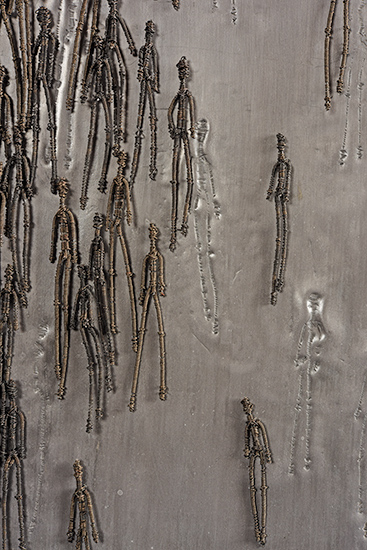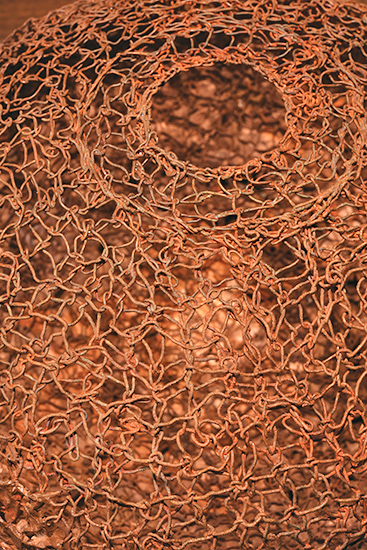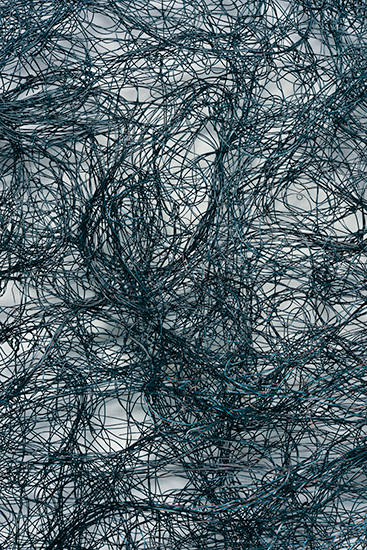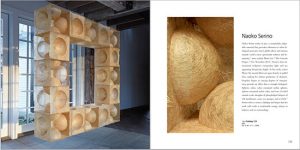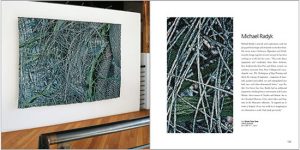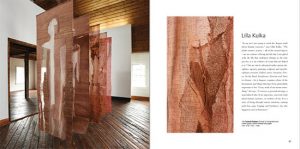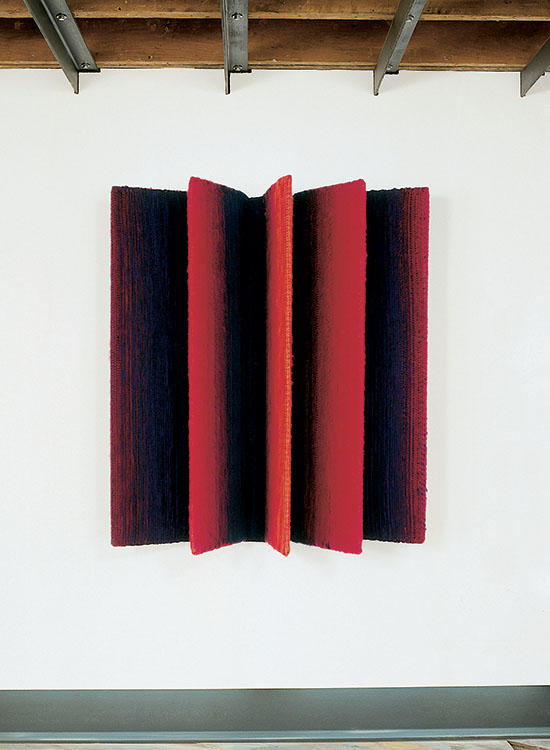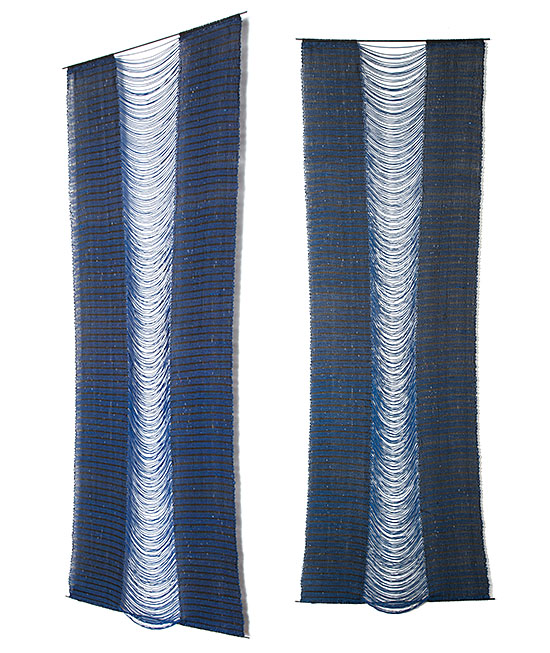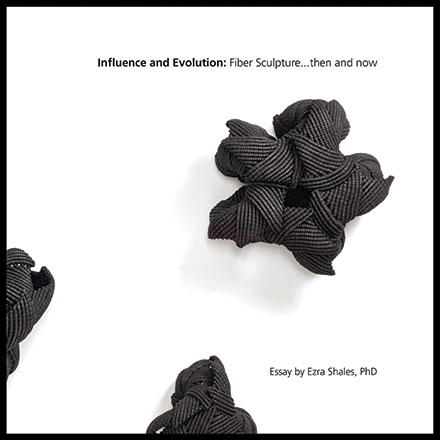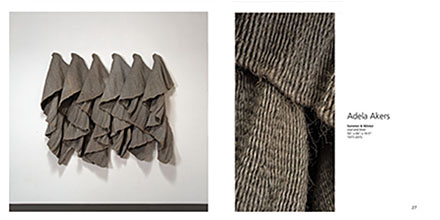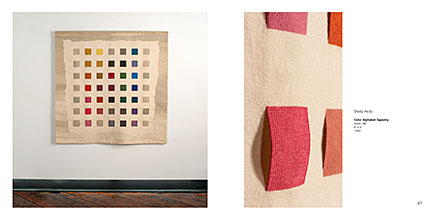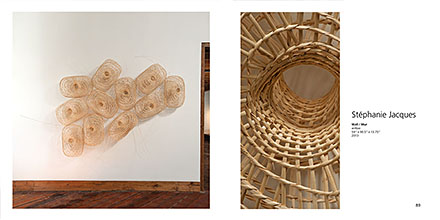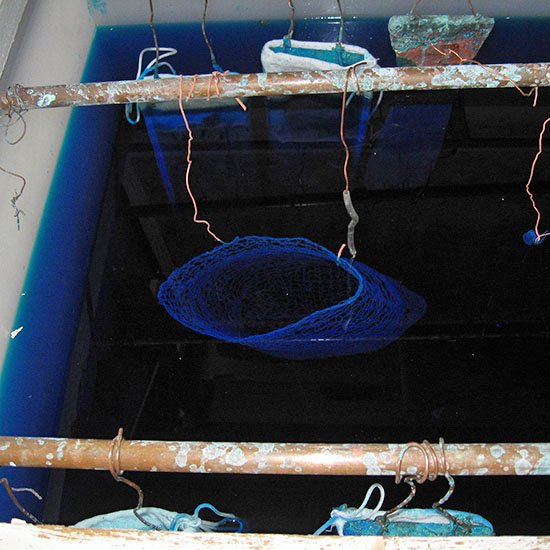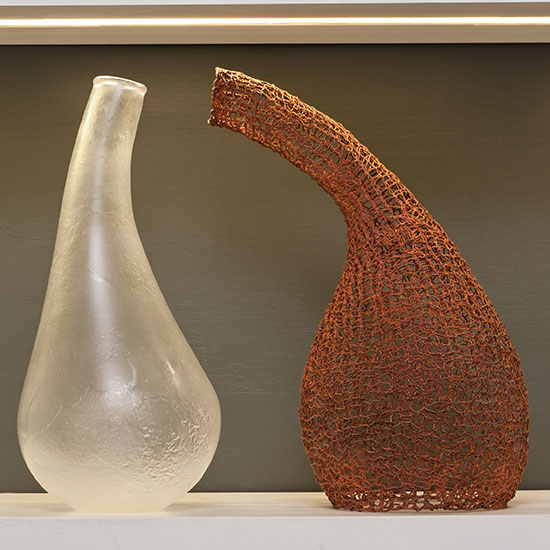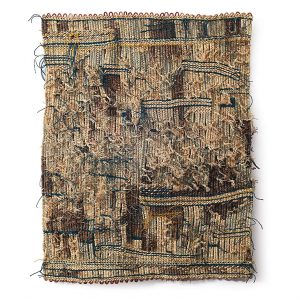
Liminal, Tim Johnson, esparto grass, recycled braided fishing line , 44” x 36.5” x 3”, 2018. Photo by Tom Grotta.
October flew by in the blink of an eye at browngrotta arts. On queue this month were remarkable pieces by Tim Johnson, Ferne Jacobs, Carole Fréve and Lawrence LaBianca.
We kicked off October with Tim Johnson’s Liminal. Woven from esparto grass and recycled fishing line, Johnson’s piece explores liminality, the state of being between two places or phases. Johnson, who is based on the Mediterranean coast of Catalonia, is constantly experimenting with new materials and techniques. Johnson’s incessant experimentation and deep appreciation for traditional weaving helps him to to create innovative work paying homage to historical weaving methods.
Ferne Jacobs’ detailed linen sculpture Open Globe was next up on the queue. In Open Globe Jacobs’ mixes greens and browns along with other colors to reproduce the assortment of colors that make up the earth’s surface. The title, “Open Globe,” “came from experiencing the piece as I was making it, in my mind, it was the earth. The colors — green, brown, bluish-grey — are the elements on our planet,” explains Jacobs. “Open is because the work has no bottom or top. So can we see the earth as a globe/ball, open/unending.”
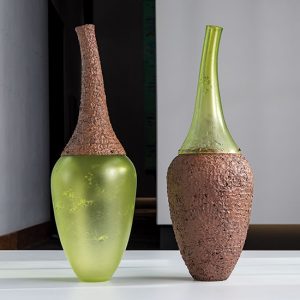
Knitted incalmo II (Double Green), Carole Frève, blown and kiln cast glass, knitted and electroformed copper, 26.5” x 9” x 21”, 2010. Photo by Tom Grotta.
Next up, Carole Fréve’s blown glass and electroformed copper duo Knitted incalmo II. Combining glass and copper, two materials that are not traditionally united, allows Fréve to create vessels that both contrast and complement each other. The symbolically paired duos will have a glass piece with “a copper ‘twin’, knitted just like a wool sweater, with knitting needles and copper wire,” notes Jean Frenette of SofaDeco.
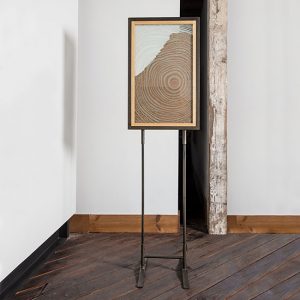
Window Tree, Lawrence LaBianca
California Redwood, glass with image of an
actual tree that was ground up and is now
between the panes, steel
75.5” x 21.25” x 18.75”, 2010. Photo by Tom Grotta.
To conclude October we shared Lawrence LaBianca’s Window Tree. Like much of LaBianca’s work, Window Tree explores humankind’s relationship with nature. LaBianca’s childhood was split between rural Maine and bustling New York City, the stark contrast between these two places left him with “a profound interest in the dichotomy between communities in which people work close to nature, and the alienation of an urban, technological society.” Window Tree’s glass panels, which hold the remnants of an old California Redwood, display an image of of the exact tree that lies between the panels.


